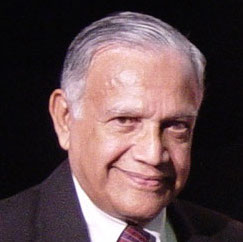Justice Weeramantry – Hero Of Muslims

By M.F.M. Anoozer –January 24, 2017
“Blessed are the peacemakers, for they shall be called the children of God.” ~ Matthew 5:9
Much has been written about Justice Weeramantry and his achievements and contributions. He was a genius at what he did as a Judge, academic and an advocate of world peace.
He was passionate about promoting peace between nations, communities and individuals. His quest for peace was not confined to his writings and lectures alone. He established the “Weeramantry International Centre for Peace Education and Research” to enhance study and understanding of the main religions of the world. Many practical steps were taken by this Centre by involving individuals and organisations to promote understanding of each other’s cultures and religions.
This desire to encourage the study of religions other than one’s own was two-fold. Firstly he believed the study of other religions reinforces the teaching of one’s own and secondly and more importantly such a process of education would take away one of the primary causes of conflict.
Justice Weeramantry lamented the separation of religion from International Law which he acknowledged was due to wars of religion in the 17th century (between 1618 and 1648). International law as written by Hugo Grotius, in the midst of this war, was euro-centric and monocultural. International law was shaped to suit their own ends dominated by economic and political values. However, he emphasized the need to bridge the gap between religion and international law pointing to the enormous reservoir of accumulated wisdom of International Law in the religions of the world. As a judge of the International Court of Justice he dipped into the teachings of various religions on international law on many occasions.
He was interested only in the principles of all religions and not matters of dogma and rituals. He concluded that all religions teach basically the same principles. They come together in their teachings on all matters such as dignity of the human person, the unity of the human family, the protection of the environment, the rights of future generations, the importance of peace, the peaceful resolution of disputes etc.
This study and research into other traditions brought him into contact with Islam, which he said was the subject of a great deal of misinformation and misunderstanding. He wrote “Islamic Jurisprudence- An International Perspective” in 1988 which was an attempt to correct this in the interests of international harmony. With the publication of this book Justice Weeramantry highlighted facts which were unknown to the West and much of the modern Muslim world. We were made aware of the great flowering of scholarship which began in Arabia soon after the death of the Prophet of Islam in the 7th century and continued until about the 15th century.
Due to a paucity of literature and material, we Sri Lankans, particularly the Muslims of Sri Lanka were not aware of the enormous gratitude the world owes to the Arab empire for the advancement made in mathematics, astronomy and science. We have algebra and algorithm from Al-Khwarizmi. Abu Moosa brothers developed trigonometry and spherical geometry just to calculate the times of the five daily prayers. Al Beruni calculated the circumference of the earth, in the 11th century, which is only 16.8 km less than the current known value of 6,356.7 km. Five centuries after Al-Beruni’s calculation of the circumference of the earth Galileo Galilei was punished by the King of Italy for claiming that the world was spherical! In the area of medicine the book written by Ibn- Sina (Avicenna to the western world) was used as recently as the 18thcentury in the Western world. The first scientist of the world, who introduced the scientific method, was Ibn-al Haytham (Al Hazen to the western world). Ibn-al Haytham wrote a six volume text on optics in the 11thcentury where he emphasized the need for systematic observation, measurement, and experiment, and the formulation, testing, and modification of hypotheses. In the area of astronomy Nasir-ud-din-Al Tusi drew the planets of the universe in the 13th century. This diagram was copied by Nicolaus Copernicus 3 centuries later and presented as his own. It is interesting to note that Copernicus copied even a mistake of the diagram of Al-Tusi thus indicating that he did not understand what he was copying! These are but a fraction of the contribution made by the Arab empire to the modern world.


